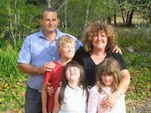 During 1994 we procured a large amount of bluestone (about 60 cubic metres), that had been salvaged from a church at Beeac, demolished some 10 to 15 years previously.
During 1994 we procured a large amount of bluestone (about 60 cubic metres), that had been salvaged from a church at Beeac, demolished some 10 to 15 years previously. The previous owner of this stone, who had dismantled the church, relocated it twice, it finished up at Anglesea where he had planned to use it to construct his own home. His dream, unfortunately, came to an untimely halt when he suffered from a fatal coronary.
The previous owner of this stone, who had dismantled the church, relocated it twice, it finished up at Anglesea where he had planned to use it to construct his own home. His dream, unfortunately, came to an untimely halt when he suffered from a fatal coronary. This stone varied from the stockpile we had already accumulated in that it was vesicular basalt (honeycomb). This type of stone is formed in faster cooling lava flows when the bubbles of gasses are trapped in the solidifying mass.
This stone varied from the stockpile we had already accumulated in that it was vesicular basalt (honeycomb). This type of stone is formed in faster cooling lava flows when the bubbles of gasses are trapped in the solidifying mass.The total volume procured included a large amount of dirt and rubble with a lot of the good blocks having been siphoned off somewhere between the demolition and our place.
We purchased this lot with the intention to use it for fill in the backs of the walls and anywhere else it would not be seen, however, the more I looked at it as it sat around our drive, the more I began to admire the natural looking texture on it's split faces. Ultimately I decided to reverse the roles of the 2 different types, with the only exposed plain stone being used in the plinth course and for window sills and door steps.
With a few rough calculations I guesstimated that this lot provided us with only about 20% of the total face stone required, resulting in a further supply of similar stone needing to be sourced.


No comments:
Post a Comment